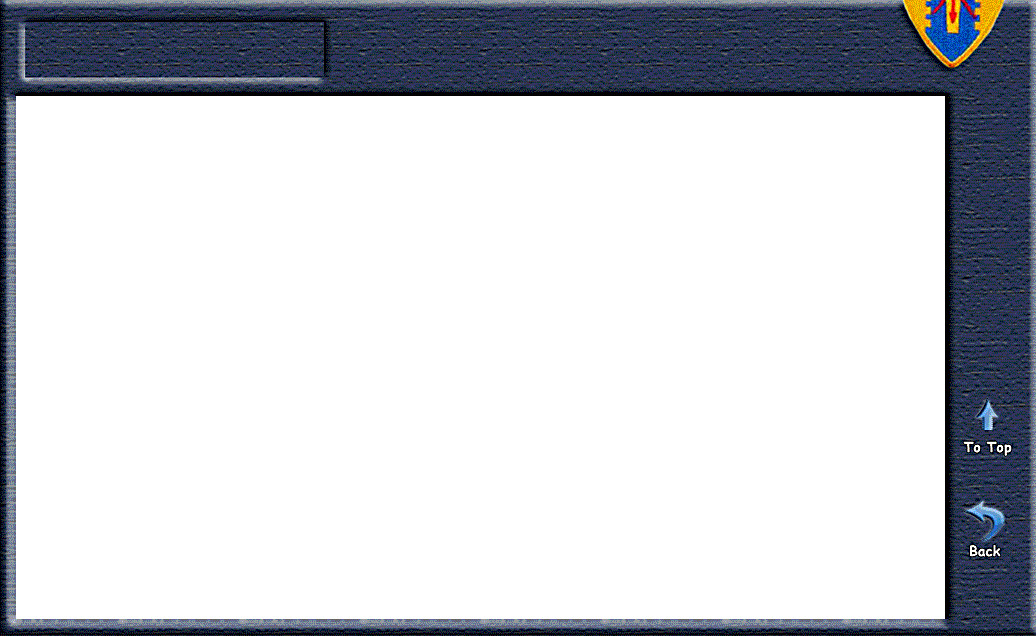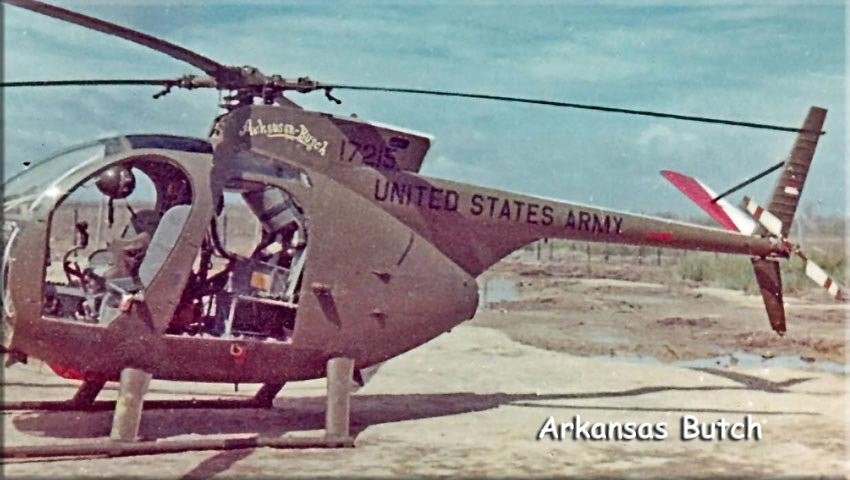

Lost at Sea - LOH "Arkansas Butch"
Tom "Sam" Dooling - OH-6A 68-17215
.....................................................................................................................................................................................
Some background:
 Vung Tau is a city on the coast of Vietnam that is about 50 miles southeast of Saigon (80 miles SE of Cu Chi) that was home to the Army Aviation schools for training pilots in-country, including transitions to the AH-1G Cobra and the instructor pilot courses for the various aircraft. It was also one of the in-country Rest and Recreation (R&R) sites. It was a fairly secure location on a peninsula that extended into the South China Sea and had some very nice accommodations for GIs staying there as well as some beautiful beaches.
Vung Tau is a city on the coast of Vietnam that is about 50 miles southeast of Saigon (80 miles SE of Cu Chi) that was home to the Army Aviation schools for training pilots in-country, including transitions to the AH-1G Cobra and the instructor pilot courses for the various aircraft. It was also one of the in-country Rest and Recreation (R&R) sites. It was a fairly secure location on a peninsula that extended into the South China Sea and had some very nice accommodations for GIs staying there as well as some beautiful beaches.
Army aviators flying in combat during the war were restricted in the amount of flight time they could accumulate over a running 30-day tally. If you exceeded 120 hours in a 30-day period, you had to see the Flight Surgeon to get clearance to fly an additional 20 hours – but once you reached 140 hours in a running 30-day period, you were grounded for a mandatory three days. Most of the Cobra and Huey Aircraft Commanders were always bumping up against these limits because they were on-duty day and night – and generally, if you hit the 140-hour mark, you would get a three-day pass to Vung Tau.
 The Fate of Arkansas Butch:
The Fate of Arkansas Butch:
In August of 1969, I was on a three-day R&R in Vung Tau for having exceeded my 140 hours. CPT William "Bones" Dawson flew a brand new OH-6 named Arkansas Butch down to drop off a couple of crew members for R&R and to pick up myself and CW2 Tom Shirley (the unit maintenance officer who was in Vung Tau taking a training course).
Tom and I met Bones at the airfield for our ride home. Neither Tom nor I were qualified in the OH-6 at that time, but I had spent numerous hours flying as an observer on my days off from flying Cobras earlier that year, so I did have some stick time in the OH-6.
Bones said he was not feeling well and would appreciate it if I would fly the aircraft back to Cu Chi (from the left seat) so he could rest. I readily agreed, and we got in and headed out. I asked Bones if it was OK if we flew over the beaches and then out around the point of the peninsula to look at the old Japanese gun emplacements left over from WWII.
We headed for the beaches and proceeded to fly low-level down the beach over the surf line headed for the point. Bones dropped a couple of smoke grenades in the water for fun, then we headed out off-shore to look at some sampans fishing about half a mile off-shore.
(Side note: The OH-6 was a very capable aircraft, but had some idiosyncrasies that were unfamiliar to those of us who had spent virtually all of our flying time in Bell helicopters. The idiosyncrasy that became very important that day was that the OH-6 generally tucked nose down when the engine quit while you flying above 80 knots. For the Bell helicopters, the nose would generally stay level or nose-up when the engine quit. Also of note was that we rarely had engine failures that were not a result of enemy damage – in almost 5,000 hours flying single engine helicopters, I only had one engine failure and can only recall one other person I knew personally who had one.)
As we went over one of the sampans at 90 knots and about 20 feet altitude in a slight right turn, the aircraft did an unexpected nose tuck due to an engine failure – took me totally by surprise and the next thing we knew, we impacted the water doing close to 100 miles per hour.
I believe that Tom Shirley escaped the aircraft shortly after impact, I rode the aircraft down probably 30-40 feet before I was able to disentangle myself from the collapsed cockpit framework and headed for the surface. All of us lost our helmets on impact. When I got to the surface, Tom Shirley was treading water and there were three helmets floating near him. We check to see if Bones was under one of the helmets (he wasn’t), and I was just taking a couple of deep breaths to see if I could go down to the aircraft and help Bones when he popped to the surface. He had ridden the aircraft to the bottom in what someone later told us was probably 60-70 feet of water.
The sampan fisherman we had just flown over paddled over to us to help. We hung onto the side of his boat until the Australians who were water skiing closer to shore came out to pick us up. They took us to the beach and drove us over to a local hospital run by Nuns. We were all ambulatory, with cuts and bruises (and as it turned out later for me, back injuries), and the nurses cleaned us up and gave us huge shots of penicillin (not really sure what the shot was for).
About that time, a full bird colonel showed up who thoroughly chewed us out (mostly Bones since he was the ranking officer and PIC) for being jackasses buzzing his beach, etc. We called home and they sent another aircraft to pick us up later that day.
Waiting for our ride, we were talking about what happened and Bones indicated that this brand new OH-6 that we had crashed was on its very first mission for the Centaurs (it had a total of 11 hours on it), and that they had experience “torsion” from the engine on the trip down to Vung Tau (Torsion: where a turbine engine accelerates and decelerates without command). Torsion resulted when a turbine aircraft’s fuel control was not operating normally and is often a precursor to engine failure. Might have been a good thing to mention before we took off, but as I was saying, Bones was not feeling well.
The Aftermath:
We got back to Cu Chi and had an audience with the current Major that was commanding the Troop. Apparently, the full bird colonel from Vung Tau had called and chewed the Troop Commander up one side and down the other. The Major told us that there was potential for us being charged criminally and that Bones was grounded pending a Flight Evaluation Board (FEB) to see if he retained his flight status. To say the least, I felt bad for Bones.
The commander that did this was, from my perspective, not a very good leader. As most veterans know, you find a very wide range of commander’s leadership skills/approaches – from the very good leaders that watch out for their subordinates to the not so good (or very poor) leaders who mostly watch out for themselves and their careers. Unfortunately for Bones, the troop commander at that time was totally focused on his career and was not so much interested in his subordinates. I clearly recall him telling us, “What are you trying to do, ruin my career?” Fortunately, in general we had pretty good platoon commanders for most of my tour, but this instance of poor leadership really stuck with me.
Considering that during my tour I saw some pretty reckless stuff done by other pilots – including: (1) pilot who tried to fly an OH-6 under the Go Dau Ha bridge and hit the bridge totaling the helicopter (chewed out – no formal punishment); (2) a Scout pilot who purposely buzzed a teenaged field worker and hit her – killing her – and received an Article 15; (3) numerous other incidents that were not simply poor judgement, but were probably criminal that went unremarked. So, Bones receiving a FEB seemed a little overkill. Bones ended up having to be the Blues commander for much of the rest of his tour and was simply given a letter of poor judgement by the FEB and kept his wings. I received no punishment for my part in this misadventure.